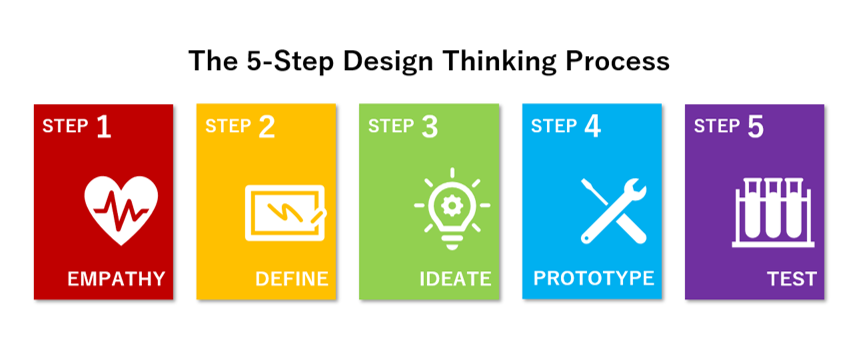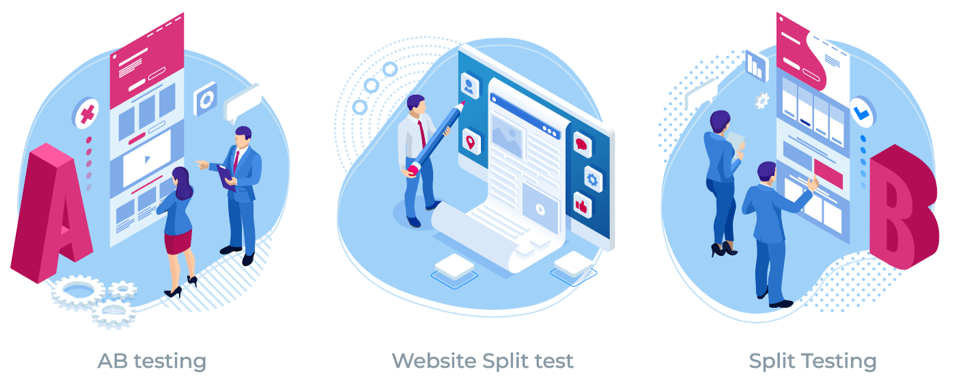DESIGN THINKING is a human-centric solutions-based approach to solving problems. It encompasses a way of thinking coupled with an assortment of hands-on techniques to seeking solutions.
Design Thinking is iterative – it requires the process to be repeated many times. And it helps one to challenge the assumptions held and reframe the challenges to discover alternative solutions.
User-Centricity is Key!
In Design Thinking, we use the term “User” to describe the person we are designing the solution for. The term “User” covers everybody from the end-user, a client, a parent, internal staff of a business, and more.
The most common question I get from people is this:
“Why is Design Thinking focusing so much on being User-Centric?”
The solutions we are trying to find would cease to have a reason without the needs from the Users. Why would anyone create a product or a service that provides no value to its users? At the same time, it is quite impossible to create a one-size-fits-all solution to everybody in the world, so we are not aiming for a fool-proof plan to ensure that happens.
Phases: The 5-step Approach as Guideline
Referring to Hasso-Plattner Institute of Design’s 5-step approach, or simply known as EDIPT (Empathy > Define > Ideate > Prototype > Test), we utilize this framework as a guideline until we become more confident Design Thinkers ourselves.

Hasso-Plattner Institute of Design’s 5-Step approach, the EDIPT. Image by the author.
When someone becomes familiar with the process, they develop a new “sense”. If you have worked with these people, you would notice how effortlessly they would transition from divergent to convergent discussions, going back and forth a few times quickly to come up with some thoughts and ideas to experiment. The idea is to not spend too much time thinking about some ideas, but rather to come up with some prototypes to be tested with the real users for feedback.
How do we, as beginners know what to do when we want to explore more about Design Thinking? One of the best ways is to familiarize yourself with the simple 5-step approach. Below is a very simplified explanation of what the 5 steps is all about.
>>>Step 1: Empathy
In a simple way, think of this stage as fact and information gathering. It is not just limited to surveys and interviews but also includes non-verbal observations and interaction to gain deeper insights.
>>>Step 2: Define
Here is where we gather all the information from Step 1 and make a problem statement definition. Being able to DEFINE your problem in a statement helps you to think more concisely. This is also the step that becomes your compass when you find yourself going off-tangent or straying away from the matter at hand.
>>>Step 3: Ideate
As the name defines it, here is where you come up with creative IDEAS! But remember, time is of essence. Every step, not just Ideate, needs to be timed appropriately. At the end of this step, select one idea to prototype.
>>>Step 4: Prototype
The prototyping stage is usually done quickly, depending on the discussion stage. Try to make as simple as possible prototypes in the beginning and move quickly to the next step. If your initial assumption or prototype is wrong, you would not feel too guilty trashing or putting it aside!
>>>Step 5: Test
Here is where we recommend you test the prototype created with real users and gather feedback! Feedback is how you will know if your initial assumption and solution meets the need of the users.
Feedback is Gold!
How often do you hear this saying, “Feedback is gold”? In this age of social media, people are rapidly taking their thoughts and feedback to various channels including Twitter and Facebook to reach the companies and manufacturers. Social media marketers are very adept to adjusting their content strategy based on the reaction of their users through quick and cheap prototype testing methods such as A/B testing. If something does not get much reaction within a stipulated time, they quickly shift to another design.

Some examples of testing options used in business. Adobe Stock Images.
Feedback comes in many ways. It could come in its raw, unaltered form through customer complains to Customer Service, or it could come in a nicely worded comment with a small clause to highlight a small “challenge” faced.
Regardless of the different method of receiving feedback, decoding the intended message is an important task, and it should be done not only at the end-stage of the Design Thinking process (Test), but rather, in every step of the way. It is never too early or too late to involve real users into the conversation!
What to do with Feedback?
Collecting data for the sake of collecting data is a waste of time. There must be a reason or an intention for every action taken in the design thinking process. Same goes with feedback.
The ultimate reason why feedback is important is because feedback tells us if we are going in the right direction or not. Never build a final output without gathering feedback and improvement points, as it would set you and your team back financially and precious time.
If you chance upon an interesting insight, always bring it back to the team to discuss!

One simple feedback is the reaction received on social media sites like Facebook or Instagram. Adobe Stock Images.
Why Teamwork?
Design Thinking harnesses on the strengths of the people within the team or working group formed. By introducing diversity, people can learn from each other. In different steps of the Design Thinking process, different skills are needed.
Some people are great at structured work. Some others thrive better in creative spaces with less boundaries. Some others switch on their “survival mode” during resource crunch to find the most optimum way to survive with available resources. All these skills are very important in helping the team move in the design sprint process.
While there are many upsides to diversity, it is also a double-edged sword. Used wisely, it brings enormous benefit to the team. Engaged wrongly, and the work experience would just go south. The key to getting all these together is to create a psychologically safe space for people to speak up, as well as learning the tricks of the “crit” trade, i.e. the ability to critique and receive critique.
Collecting data for the sake of collecting data is a waste of time. There must be a reason or an intention for every action taken in the design thinking process. Same goes with feedback.
The ultimate reason why feedback is important is because feedback tells us if we are going in the right direction or not. Never build a final output without gathering feedback and improvement points, as it would set you and your team back financially and precious time.
If you chance upon an interesting insight, always bring it back to the team to discuss!

Design Thinking is all about collaboration and co-creation. Adobe Stock Images.
In Conclusion
Design Thinking as a concept is simple: a human-centric approach to problem-solving using the 5-step approach as a guide. The theory is simple and easy to follow. The gem is in the way one executes the process.
Becoming successful at Design Thinking takes a lot of time and practice. It requires one to learn other important skills such as social intelligence, interview skills, leadership, communication skills, and many more. Having the ability to draw and design would be an advantage, but it does not mean that everybody within the team has to be great at it. The idea is to trust and empower team members with skills and ability to lead different parts of the process.
At the same time, practitioners are encouraged to build their creative confidence and work on having a growth mindset. While “failure” is a staple diet in the design thinking process, one should not consider “failure” an enemy. Instead, one should embrace it like a dear friend who would speak honestly with the best intention at heart. As what we say, “Always come from the place of love”.
Above all, having that respect for fellow team members as decent human beings would make a huge difference when the team irons out frictions and disagreements.












